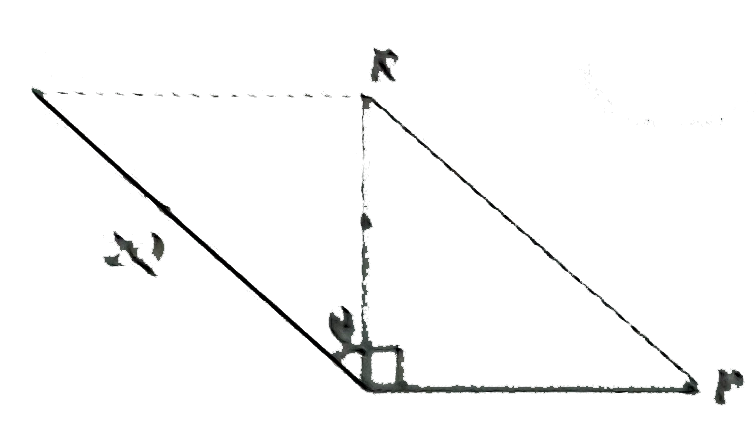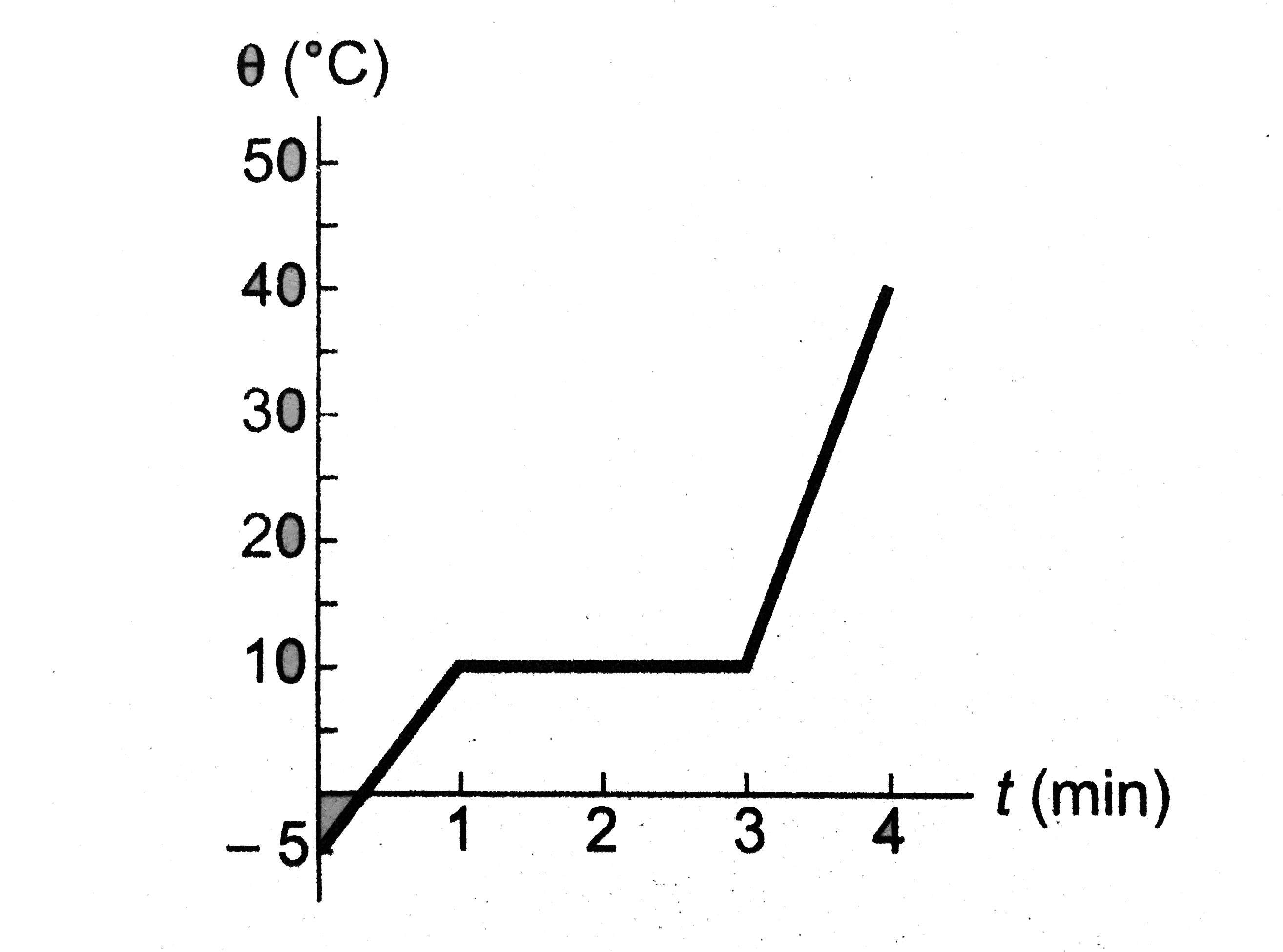The resultant of two vectors →P and →Q is →R. If →Q is doubled then the new resultant vector is perpendicular to →P. Then magnitude of →R is :-
P
(P+Q)
Q
(P−Q)
The correct Answer is:C
(c ) We have 2Qsinθ=P,asR⊥P

Now,R√P2+Q2+2PQcos(90∘+θ)
=√P2+Q2−2PQsinθ
=√(2Qsinθ)2+Q2−2(2Qsinθ)Qsinθ
=√4Q2sin2θ+Q2−4Q2−4Q2sin2θ
Topper's Solved these Questions
Similar Questions
Find the value of
(a) cot300∘
(b) tan330∘
(c) cos(−60)∘
(d) sin(−150)∘
(e) cos(−120)∘
View SolutionAs a physicist, you put heat into a 500 g solid sample at the rate of 10.0kJ/min, while recording its temperature as a function of time. You plot your data and obtain the graph shown in figure.
 .
.
(a) What is the latent heat of fusion for this solid?
(b) What is the specific heat of solid state of the material?
View SolutionThe resultant of two vectors vec(P) and vec(Q) is vec(R ) . If the magnitude of vec(Q) is doubled, the new resultant vector becomes perpendicular to vec(P) . Then, the magnitude of vec(R ) is equal to
View SolutionThree vectors vec(P) , vec(Q) and vec( R) are such that |vec(P)| , |vec(Q )|, |vec(R )| = sqrt(2) |vec(P)| and vec(P) + vec(Q) + vec(R ) = 0 . The angle between vec(P) and vec(Q) , vec(Q) and vec(R ) and vec(P) and vec(R ) are
View SolutionLet vec(p),vec(q),vec(r) be three unit vectors such that vec(p)xxvec(q)=vec(r) . If vec(a) is any vector such that [vec(a)vec(q)vec(r )]=1,[vec(a)vec(r)vec(p )]=2 , and [vec(a)vec(p)vec(q )]=3 , then vec(a)=
View SolutionThe resultant of two vectors →P and →Q is →R. If →Q is doubled then the new resultant vector is perpendicular to →P. Then magnitude of →R is :-
View SolutionTwo vectors →P and →Q are added, the magnitude of resultant is 15 units. If →Q is reversed and added to →P resultant has a magnitude √113 units. The resultant of →P and a vector perpendicular →P and equal in magnitude to→Q has a magnitude
View SolutionThe resultant of two vectors →P and →Q is →R. If the magnitude of →Q is doubled, the new resultant becomes perpendicular to →P, then the magnitude of →R is
View SolutionThe resultant of two vectors →P and →Q is →R. If the magnitude of →Q is doubled, the new resultant becomes perpendicular to →P, then the magnitude of →R is
View SolutionThe resultant of two vectors →P and →Q is →R. If the magnitude of →Q is doubled, the new resultant becomes perpendicular to →P, then the magnitude of →R is
View SolutionThe resultant of two vectors →P and →Q is →R. If the magnitude of →Q is doubled, the new resultant vector becomes perpendicular to →P. Then, the magnitude of →R is equal to
View SolutionThe resultant of two vectors →P and →Q is →R. If →Q is doubled then the new resultant vector is perpendicular to →P. Then magnitude of →R is :-
View SolutionThe resultant vector of vec(P) and vec(Q) is vec(R ) . On reversing the direction of vec(Q) the resultant vector becomes vec(S) . Show that R^(2)+S^(2)=2(P^(2)+Q^(2))
View SolutionThe resultant of two vectors →Pand→Q is →R. IF the magnitude of →Q is doubled, the new resultant becomes perpendicular to →P. Then the magnitude of →R is
View SolutionVector vec P And vec Q The resulting vector of vec P Is perpendicular to vec P And vec Q What will be the angle between?
View Solution→P+→Q=→R. જો →Q નું મૂલ્ય બમણું કરવામાં આવે, તો નવા સદિશ →P ને લંબ થાય છે, તો →R નું મૂલ્ય શોધો.
View Solution
